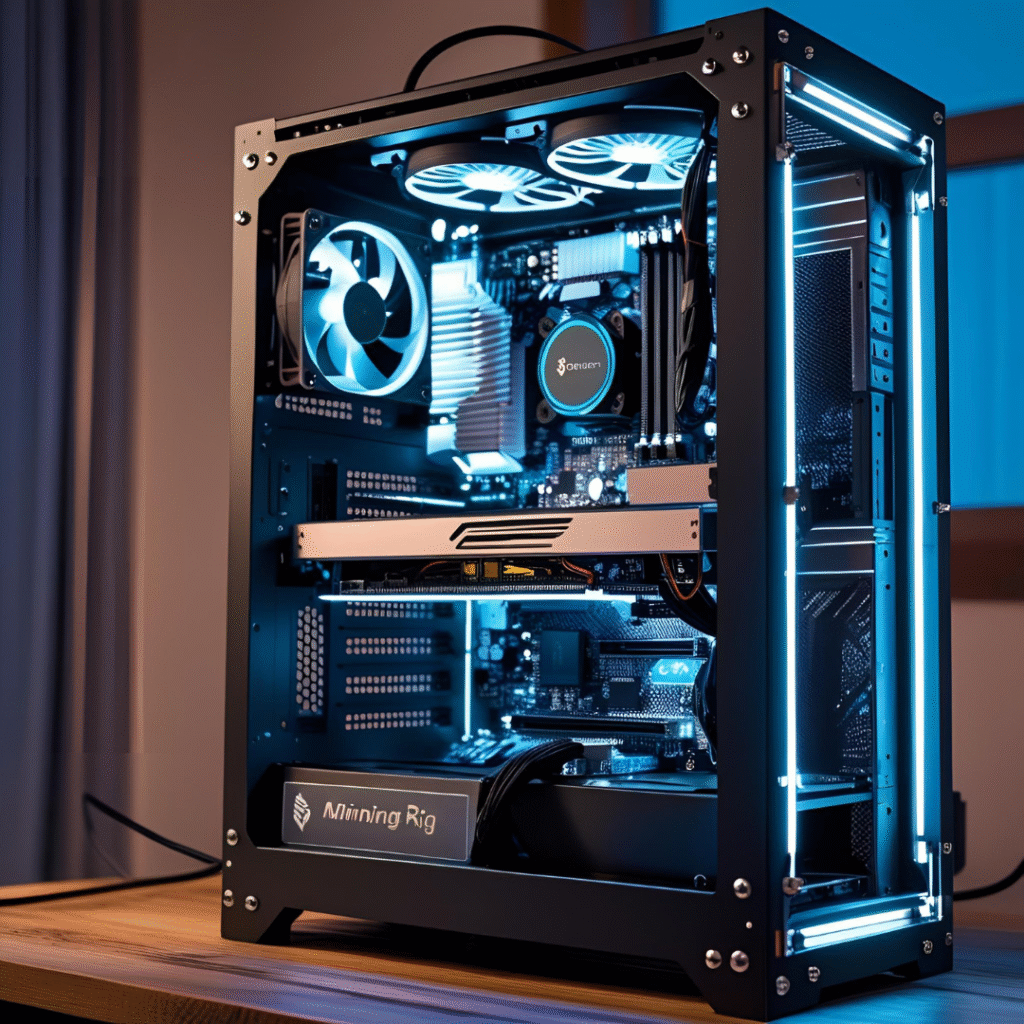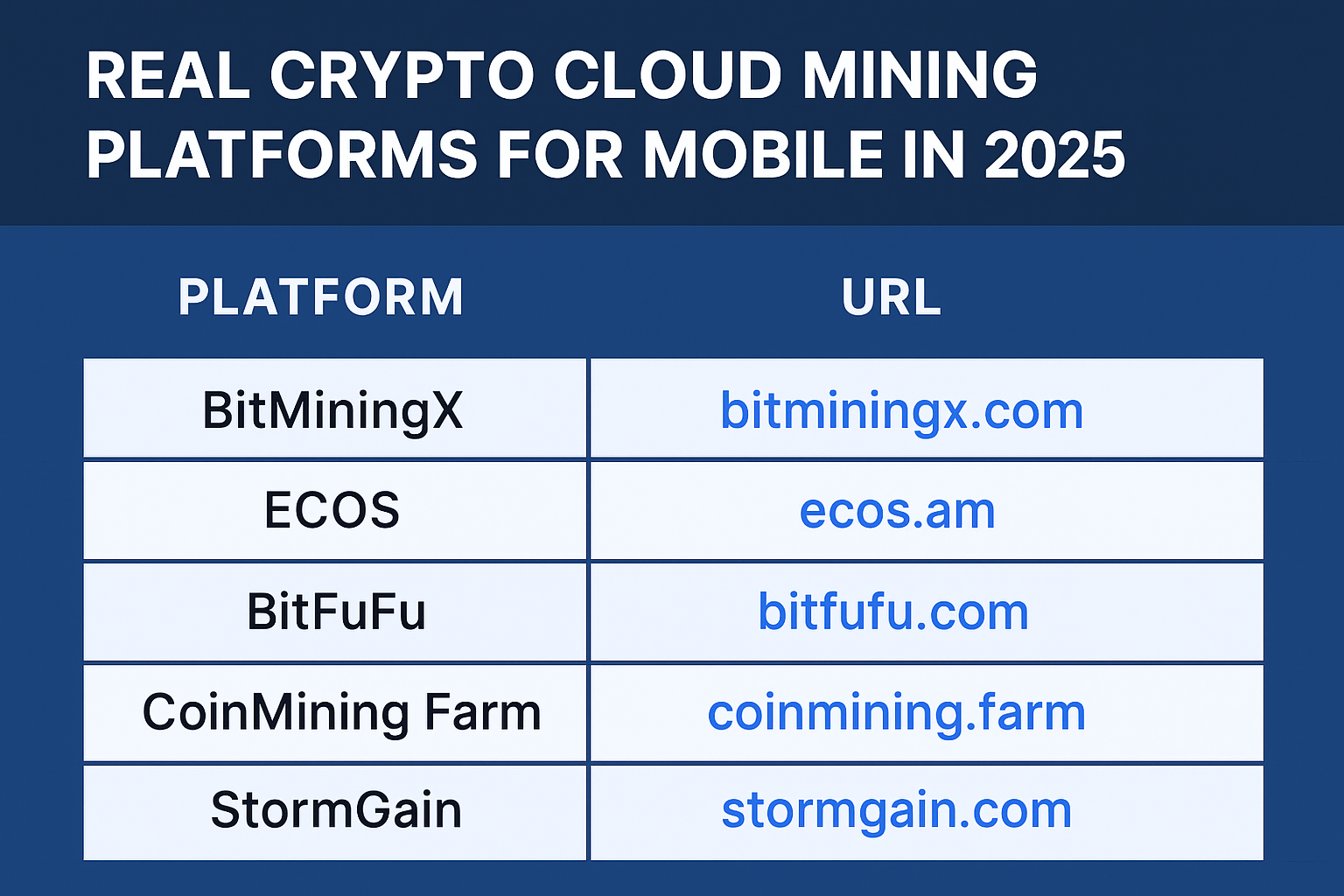Cryptocurrency mining has evolved from a niche hobby to a mainstream
investment avenue. With advancements in technology and a growing interest in digital
currencies, many newcomers are eager to embark on their mining journey. However, the initial
investment can be daunting. This guide aims to provide beginners with insights into building
affordable mining rigs in 2025, ensuring profitability without breaking the bank.
1. Understanding the Basics of Cryptocurrency Mining
Before diving into hardware selection, it’s essential to grasp the fundamentals of cryptocurrency
mining.
● Proof of Work (PoW): The consensus mechanism used by many cryptocurrencies,
including Bitcoin, where miners solve complex mathematical problems to validate
transactions and secure the network.
● Hashrate: A measure of computational power used in mining. Higher hashrates increase
the chances of solving the cryptographic puzzle and earning rewards.
● Mining Pools: Groups of miners who combine their computational resources to increase
the probability of solving a block. Rewards are distributed among participants based on
their contributed hashrate.
● Mining Software: Programs that connect your hardware to the blockchain network,
facilitating the mining process.
2. Selecting the Right Hardware
The choice of hardware significantly impacts mining efficiency and profitability. Here’s a
breakdown of components suitable for beginners:
a. Graphics Processing Units (GPUs)
GPUs are versatile and can mine various cryptocurrencies. Popular choices include:
● NVIDIA GeForce RTX 3060 Ti: Offers a balance between performance and power
consumption.
● AMD Radeon RX 6700 XT: Known for its efficiency in mining algorithms like Ethash.
b. Application-Specific Integrated Circuits (ASICs)
ASICs are specialized devices designed for specific mining algorithms. They offer higher
efficiency but are limited to particular cryptocurrencies:
● Bitmain Antminer S9: A cost-effective option for mining Bitcoin, though newer models
may offer better efficiency.
c. Central Processing Units (CPUs)
While not as powerful as GPUs or ASICs, CPUs can mine certain cryptocurrencies like Monero:
● AMD Ryzen 7 3700X: Offers a balance between price and performance, making it
suitable for CPU-based mining.
d. Motherboards
Ensure compatibility with your chosen hardware:
● ASRock H81 Pro BTC: Supports multiple GPUs, making it ideal for mining rigs.
e. Power Supply Units (PSUs)
A reliable PSU is crucial for stable operation:
● Corsair RM850x: Offers 850W power with 80+ Gold certification, ensuring energy
efficiency.
f. Cooling Solutions
Proper cooling prevents hardware from overheating:
● Cooler Master Hyper 212: An affordable air cooler suitable for CPUs.
● Noctua NF-F12: High-quality fans for optimal airflow.
g. Storage
● 120GB SSD: Sufficient for storing the operating system and mining software.

3. Building Your Mining Rig
Once you’ve selected your components, follow these steps:
- Assemble the Frame: Use materials like aluminum or steel to create a sturdy frame that
can hold all components securely. - Install the Motherboard: Mount the motherboard onto the frame, ensuring all ports are
accessible. - Attach the CPU and RAM: Install the CPU into the motherboard socket and add the
RAM into the appropriate slots. - Mount the GPUs: Use riser cards to connect the GPUs to the motherboard, ensuring
they are securely fastened. - Connect the PSU: Distribute power cables to the motherboard, GPUs, and other
components. - Set Up Cooling: Position fans to ensure optimal airflow, preventing components from
overheating. - Install Storage: Mount the SSD and connect it to the motherboard.
- Power On: Ensure all connections are secure, then power on the rig to test functionality.
4. Selecting Mining Software
Choose software compatible with your hardware and the cryptocurrency you wish to mine:
● CGMiner: A popular choice for ASIC and FPGA mining.
● Claymore: Supports dual mining, allowing you to mine two cryptocurrencies
simultaneously.
● XMRig: Optimized for CPU minings, particularly for Monero.

5. Joining a Mining Pool
Solo minings can be challenging for beginners due to high competition. Joining a mining pool
increases the chances of earning rewards:
● Ethermine: A popular Ethereum mining pool with low fees and reliable payouts.
● F2Pool: Supports multiple cryptocurrencies, including Bitcoin and Litecoin.
6. Estimating Profitability
Use online calculators to estimate potential earnings:
● WhatToMine: Allows you to input your hardware specifications to determine the most
profitable coins to mine.
● NiceHash: Offers a marketplace where you can rent out your mining power.
7. Managing Electricity Costs
Mining consumes significant power, impacting profitability:
● Energy-Efficient Hardware: Opt for components with high energy efficiency ratings.
● Off-Peak Hours: Run your rig during off-peak hours when electricity rates are lower.
● Renewable Energy: Consider using solar panels or other renewable sources to power
your rig.
8. Legal and Regulatory Considerations
Ensure compliance with local laws and regulations:
● Permits: Check if you need any licenses or permits to operate a mining rig in your area.
● Taxes: Understand the tax implications of mining income in your jurisdiction.
● Zoning Laws: Ensure your mining activities comply with local zoning regulations.
9. Maintenance and Troubleshooting
Regular maintenance ensures optimal performance:
● Dusting: Clean components regularly to prevent dust buildup.
● Monitoring: Use software to monitor temperatures and performance metrics.
● Updates: Keep mining software and drivers up to date to ensure compatibility and
performance.
10. Scaling Your Mining Operation
As you gain experience, consider expanding your setup:
● Additional GPUs: Add more GPUs to increase hashrate.
● Dedicated Space: Set up a dedicated area for your mining rig to reduce noise and heat
in living spaces.
● Automation: Implement automation tools to manage and monitor your mining operation
remotely.
Conclusion
Building an affordable mining rig in 2025 is achievable with careful planning and research. By
selecting the right components, optimizing energy consumption, and staying informed about the
latest developments in the cryptocurrency space, beginners can embark on a profitable mining
journey. Always prioritize safety, legality, and efficiency to ensure long-term success in the
mining industry.
Frequently Asked Questions (FAQs)
1. What’s the best budget-friendly GPU for beginners in 2025?
Answer: The NVIDIA GeForce RTX 3060 Ti remains a top choice for its power-efficiency and versatility across multiple coins.
2. Can I mine profitably with just one GPU?
Answer: Yes, especially with efficient cards and lower electricity rates, solo mining or pool mining can still yield profits.
3. Is ASIC or GPU better for beginners?
Answer: GPUs offer more flexibility and are better suited for beginners due to multi-coin support and resale value.
4. How much electricity does a typical mining rig consume?
Answer: A basic rig with 2-3 GPUs consumes about 600-850W. Running costs depend on local power rates.
5. Do I need a license to mine cryptocurrency at home?
Answer: In most regions, home mining doesn’t require a license, but it’s essential to check local regulations and tax laws.
6. Can I use my gaming PC as a mining rig?
Answer: Yes, you can. As long as your PC has a compatible GPU and sufficient cooling, it’s a great place to start mining.




